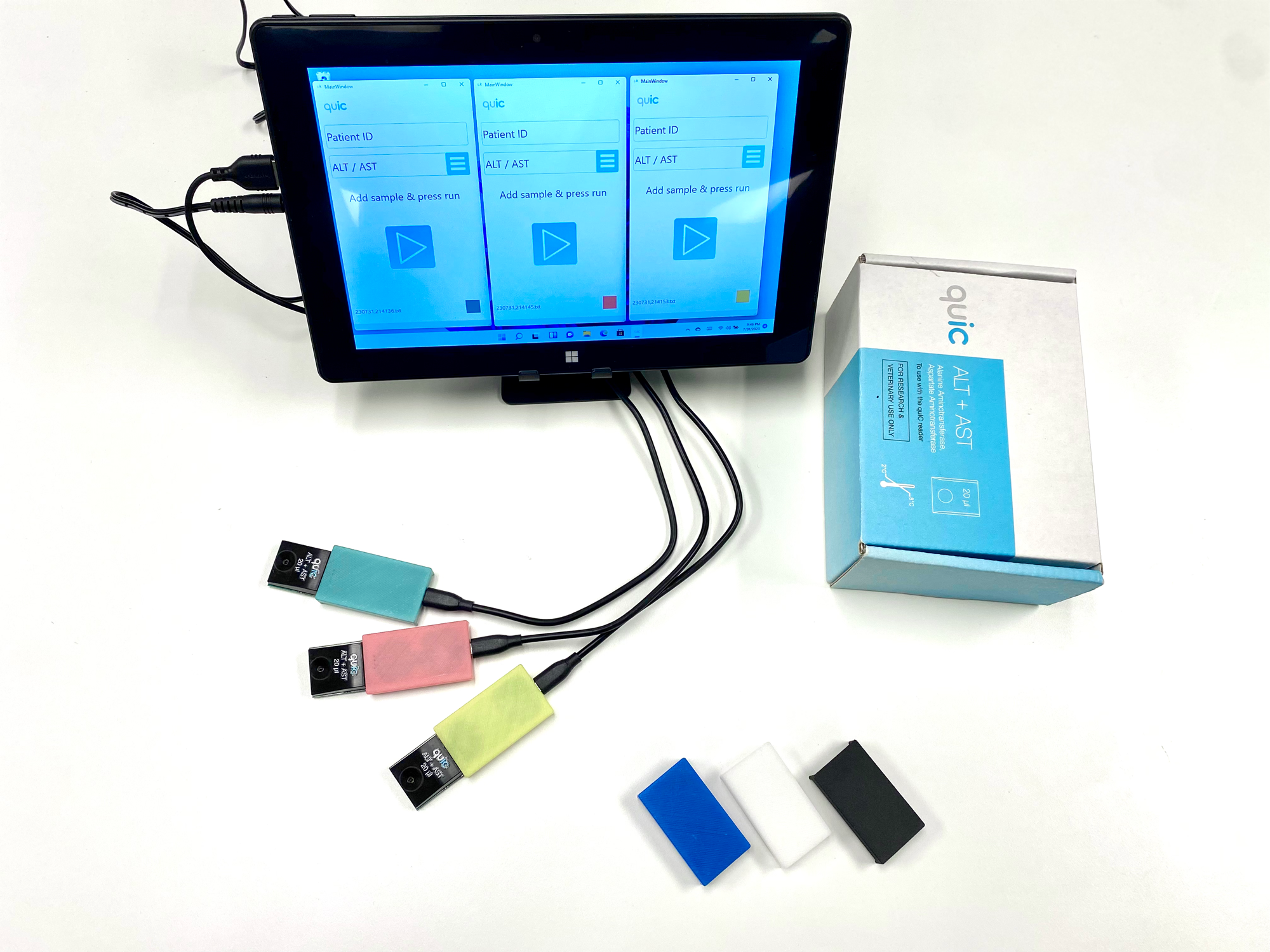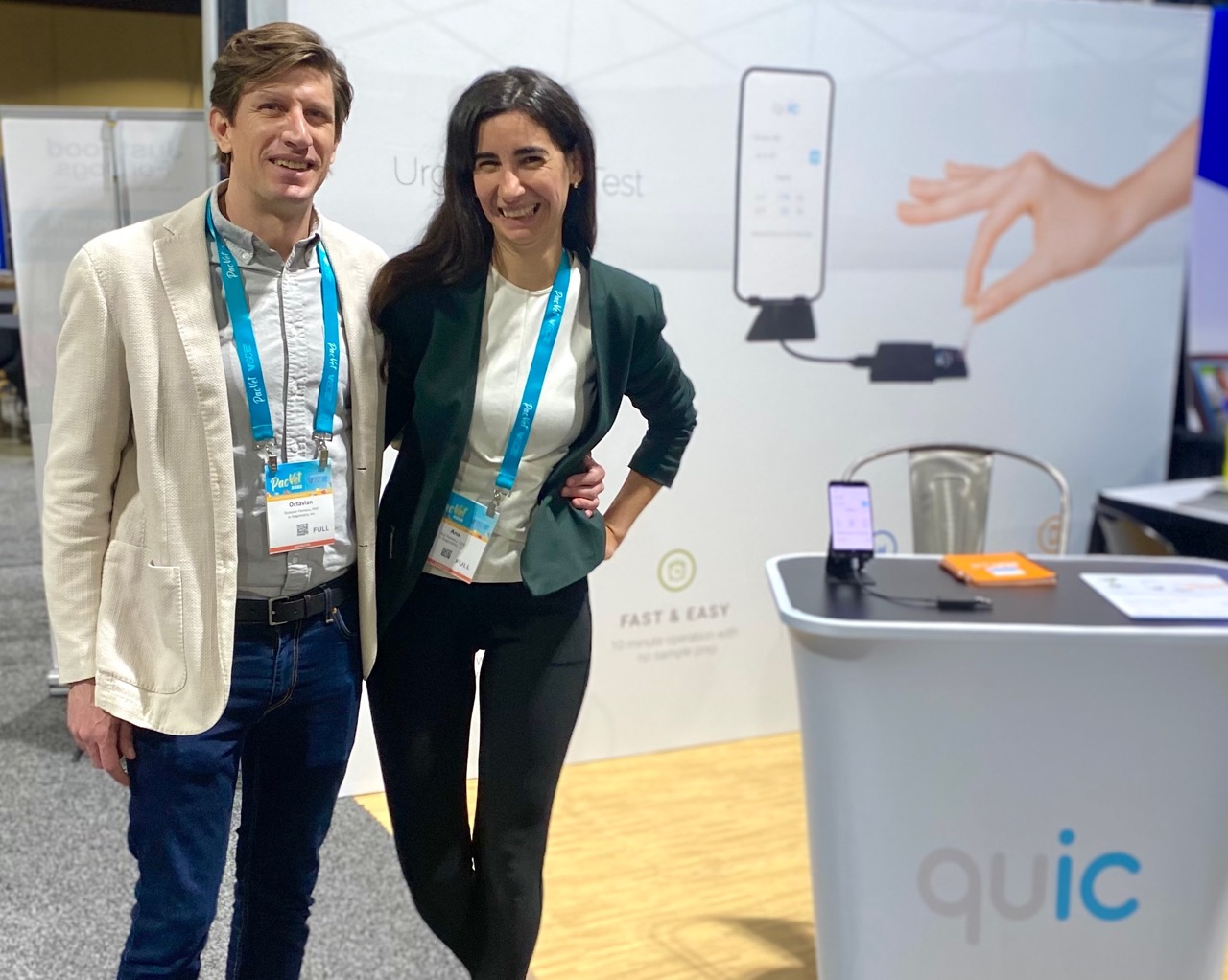[ad_1]
If you’re rushed to the hospital and into emergency surgery, it would be helpful if the anesthesiology team could predict whether your body will react in the way they expect. In the majority of cases, things work out just fine, but if a patient has liver failure, things can get hairy pretty fast. Over time, that’s the problem In Diagnostics is hoping to solve, although it has a few regulatory hurdles to jump through before the device shows up in an ambulance near you. For now, the company is focusing on the veterinary market and is announcing that it’s starting to ship its products to the first wave of customers.
Pitching in the TechCrunch Disrupt Battlefield 20 today, the founding team Octavian Florescu (CEO) and Ana Florescu (COO) have spent the last five years building and refining the tech at the heart of the device.

Dr Averi Brickson from Citrus Heights Pet Hospital, alongside Booker, officially In Diagnostics’ first patient. Under her supervision, Booker is treated for valley fever and monitored bi-weekly from home with InD’s devices. Image Credit: In Diagnostics
The company has developed a blood-testing platform that takes a drop of blood and displays diagnostic measurements on a phone or computer. At the heart of it is a custom-made microchip containing a high-precision spectrophotometer (basically, a little camera) that can analyze blood. The first product is called the Quic ALT+AST test — a glucometer-like test that provides ALT and AST liver enzymes from a drop of blood in as little as 5 minutes.
“Right now in emergency departments, they have an i-STAT, which measures things like electrolytes, blood gases, and they have kidney function, but they’re missing the liver. So that was the whole point of exploiting the gap in other instruments,” says Octavian. “We could just work alongside them and get your liver function for anything that’s imaging, anything that’s anesthetic, anything that’s heavy-duty drugs that you need to treat right away. It gives you a quick, rapid indication.”
The journey from genesis to this product launch has been circuitous, starting with a UC Berkeley doctoral thesis that was spun out into a company, Xip. The company was developing drop-of-blood immunoassay tests for identifying heart attacks in patients experiencing chest pain, before being acquired by another company. The other company decided not to do anything with it, so the Florescus were able to buy the IP back for pennies on the dollar and continued building the company.

In Diagnostics’s Quic test in action. Image Credit: In Diagnostics.
The company’s first product is a liver enzyme test aimed at the veterinary and research market — and making it possible for consumers at home to test the liver health of their pets.
“It’s specifically useful in the research market for laboratory animals. So if you have a clinical trial, where you’re working with mice, you have a challenge: Mice have small bodies, so they have very little blood to begin with. So it’s very important for them to be able to draw just a little bit of blood and get notice of how their liver is doing. That’s especially important if they are doing any toxicity drug related studies,” Ana explains.
Instead of taking the ever-so-publicly failed Theranos approach of testing for everything on a very small blood sample, In Diagnostics is using similarly small sample sizes. A standard single droplet from a pipette is around 50 microliters. In Diagnostics’ system needs only about 25 microliters to work — so half a drop of blood — to run its tests.
The team showed the product in action, illustrating how in under five minutes, its device returned measurements of 67 and 151 for ALT and AST, respectively. The fully calibrated result run on the same blood in a fully calibrated laboratory was 70 and 165 — both numbers within 10% of each other, but with cost, portability, convenience, and speed that lab machines can’t compete with. The team ran a correlation study at UC Davis, where it saw .98 and .92 correlations for the respective measurements, over the course of 60 measurements.
So that’s all good and well, but why does it matter? Well, it turns out that livers are very good up to a point, and beyond that point, things go downhill fast.

Octavian and Ana Florescu at their booth at the PacVet trade show. Image credit: In Diagnostics
“ASD and ALD enzymes are usually concentrated in the liver tissue, in two separate areas of the liver. If you have them in elevated values in the bloodstream, that means one or the other portion of the liver is damaged and struggling. It’s an indication of liver stress. And when it gets to certain values, it’s an indication of acute liver failure,” explains Octavian. “It’s an enzyme that normally shouldn’t be in the blood. And if it does turn out in the blood, then something is wrong.”
The key point, the team tells me, is that the liver can drop in efficacy up to 80% without any sign of problem: You feel perfectly fine. Then you can go from just 20% liver function to acute liver failure in a very short span of time. Being able to monitor liver function over time, then, can help inform how the liver is doing and take corrective action.
The company raised a $3 million Series A back in 2019 and isn’t yet sure whether the growth trajectory will take them toward additional VC funding or if they will continue with a lean team and grow off cash flow.
“We are on the fence on whether or not to take in money and expand the menu and grow faster that way,” Octavian explains. “The menu,” in this case, is the number of tests the company offers for use with its device. “Our plan B is to just keep going, get to profitability and use the free cash flow to continue expansion of the menu and the market.”
With its current setup, the company says it can manufacture 400 test chips per day, with a retail price of around $30 per chip. The dongle that plugs into the computer or smartphone is thrown in the box free of charge with a clinic’s first order. The company has plans to be able to significantly scale its manufacturing, and consequently get better unit economics as well.
[ad_2]
Source link
